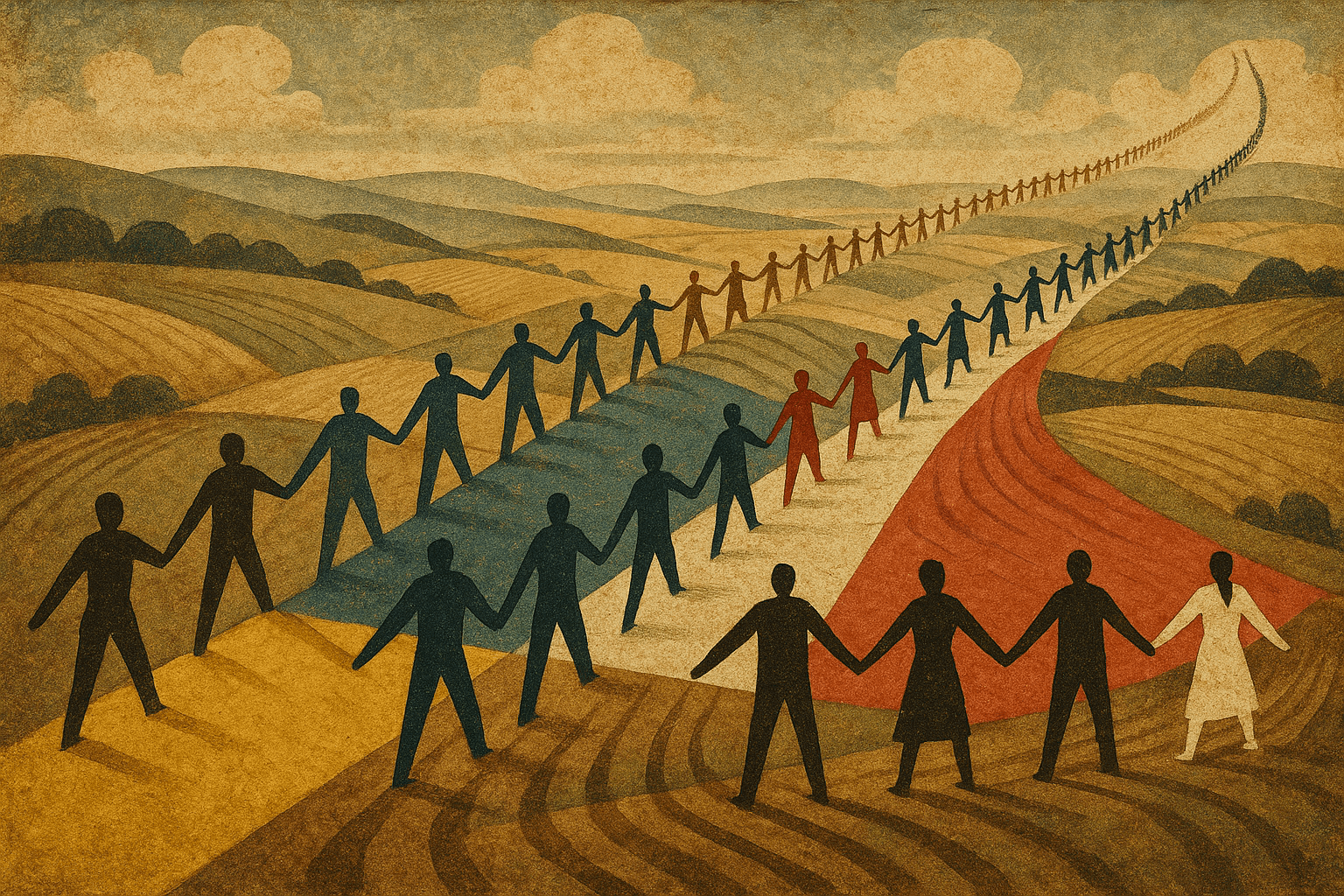To understand this incredible event, we must rewind fifty years to the very same date, a day that sealed the fate of these three nations for half a century.
A Painful Anniversary: The Roots of the Protest
On August 23, 1939, on the eve of World War II, Nazi Germany and the Soviet Union signed a non-aggression treaty known as the Molotov-Ribbentrop Pact. While its public face was one of neutrality, its true purpose lay hidden in a secret protocol. This clandestine addendum carved up Eastern Europe into spheres of influence, callously assigning Estonia, Latvia, and Lithuania to the Soviet Union.
Within a year, the Red Army had occupied all three Baltic states, forcibly incorporating them into the USSR. What followed were five decades of brutal Soviet rule. National identities were suppressed, economies were collectivized, and political dissent was crushed. Hundreds of thousands of citizens were executed or deported to Siberian gulags in a systematic effort to erase their culture and break their spirit. Yet, the memory of independence never faded.
The Singing Revolution: A Chorus for Freedom
By the late 1980s, the political climate was changing. Soviet leader Mikhail Gorbachev’s policies of glasnost (openness) and perestroika (restructuring) inadvertently created an opening for long-suppressed nationalist sentiments to resurface. The Baltic states seized this opportunity, not with weapons, but with song.
This period became known as the “Singing Revolution.” Across Estonia, Latvia, and Lithuania, people gathered in vast numbers at song festivals and demonstrations, defiantly singing patriotic hymns and folk songs that had been banned under Soviet rule. Music became their weapon of choice, expressing a collective desire for freedom that could no longer be contained.
From this movement emerged powerful pro-independence political organizations: Sąjūdis in Lithuania, the Popular Front of Latvia (Tautas fronte), and the Popular Front of Estonia (Rahvarinne). It was these groups that conceived of a monumental protest to mark the 50th anniversary of the Molotov-Ribbentrop Pact—a protest that would show the world their unity and their rejection of its illegal consequences.
Weaving a Human Chain: The Logistics of Hope
Organizing a 420-mile-long human chain with no internet or mobile phones was a logistical masterpiece. The popular fronts meticulously planned the route, which stretched from Toompea Tower in Tallinn, Estonia, through Riga, Latvia, and ended at Gediminas’ Tower in Vilnius, Lithuania.
Every city and town was assigned a specific segment of the chain to fill. Organizers used state-controlled radio and word-of-mouth to coordinate the effort, broadcasting instructions and updates. On the day of the event, free bus rides were offered to transport people from remote areas to their designated spots along the roads. People decorated their cars with the now-legal national flags and brought flowers and candles.
The atmosphere was not one of anger, but of joyous, determined solidarity. Grandparents stood hand-in-hand with their grandchildren, office workers with farmers. Black ribbons were attached to national flags to commemorate the victims of Soviet occupation. It was a pilgrimage of hope, a physical manifestation of a shared dream.
“A common European home can only be set up if all European nations are granted a free right to self-determination.” – Joint declaration from the organizers on the day of the protest.
A 15-Minute Stand That Shook the Kremlin
At exactly 7:00 PM local time on August 23, 1989, the chain was complete. For fifteen minutes, approximately two million people stood together, holding hands in a moment of profound, peaceful defiance. Special radio broadcasts coordinated the event, playing national anthems and songs of freedom. In many places, after a moment of silence, the words “Freedom for the Baltics!” (Laisvę Baltijai! Brīvību Baltijai! Vabadus Baltimaadele!) rippled down the line.
The event was a massive success, capturing the world’s attention. Global news crews filmed helicopters flying over the seemingly endless line of people, broadcasting the powerful imagery across the planet. The protest unequivocally demonstrated that the occupation of the Baltic states was not a settled historical issue, but a present-day injustice.
Moscow’s reaction was furious. The official Soviet news agency, TASS, released a statement condemning the “nationalist hysteria” and accusing the organizers of pushing the nations toward an “abyss” of “civil conflict.” The Kremlin issued thinly veiled threats, but it stopped short of a violent crackdown. The eyes of the world were watching, and a brutal response would have shattered Gorbachev’s image as a reformer.
The Unbreakable Link: Legacy of the Baltic Way
The Baltic Chain was a political and psychological turning point. It solidified the unity of the three nations and proved to both the Kremlin and the world that their drive for independence was non-negotiable and supported by the overwhelming majority of the population. It was a masterclass in public relations, beautifully and peacefully framing their cause on the international stage.
Momentum became unstoppable. Just six months later, in March 1990, Lithuania became the first Soviet republic to declare its independence restored. Following a tense period that included a failed Soviet coup, Estonia and Latvia formally declared their independence restored in August 1991.
Today, the Baltic Way is remembered as a symbol of the power of non-violent resistance. In 2009, UNESCO recognized the event by including it in its Memory of the World Register, preserving its story for all time. The Baltic Chain remains an enduring inspiration for freedom movements globally, a powerful reminder that even in the face of overwhelming power, the unified will of the people, linked hand-in-hand, can forge a path to freedom.
